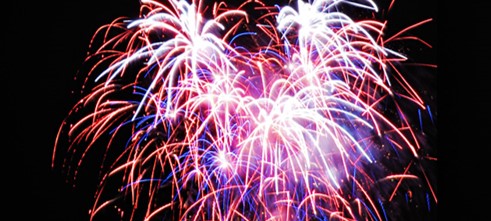
About this time of year (for some reason) we tend to see some articles about the science of fireworks. These cover the chemistry and physics that make the colours and the bangs – which is fun if you are into that kind of thing … but what about the wood in fireworks?
The most obvious bit of wood is the stick, which you find on rocket fireworks and is there to ensure it shoots in the desired direction (although the stick of the rocket catches the wind and this is the reason why rockets tend to shoot into the wind rather than with it). Some rockets have a plastic stick rather than a wooden one – which being non-biodegradable is not environmentally friendly. The stick should be inserted into a tube that is firmly fixed to something, such as a larger wooden post (inserting the rocket’s stick directly into the ground, or into a bottle, risks it getting stuck or falling over).
The next most obvious thing is the card, wound paper tube, or papier-mâché that makes the body of the firework. This contains the reaction, ensuring that the pretty effects, or propulsion, shoot from one end (the other end being plugged). As well as caps, dividers and bags, wood-based containers are also used to the bursting charge that makes the firework’s bang when it ruptures (the original inspiration is said to be green bamboo exploding when put on a fire). Some fireworks use plastic bodies instead, which like with the plastic sticks amounts to littering if you don’t go searching for the debris.
Less obvious, is that fireworks often contain sawdust, or wood flour, there to slow down the reaction for timed or long lasting effects – such as with roman candles.
The gunpowder itself is also made from wood. Black powder has three ingredients – sulfur, carbon and potassium nitrate. The carbon is provided in the form of charcoal. Charcoal is not pure carbon – it also contains partially pyrolyzed cellulose which helps the reaction begin and be more fireworky (which is a real word). The particle size and composition of the charcoal is very important to the firework effect, which is why certain species are favoured for this (e.g. willow).
Wood – it’s not just for the bonfires!

Leave a Reply
You must be logged in to post a comment.